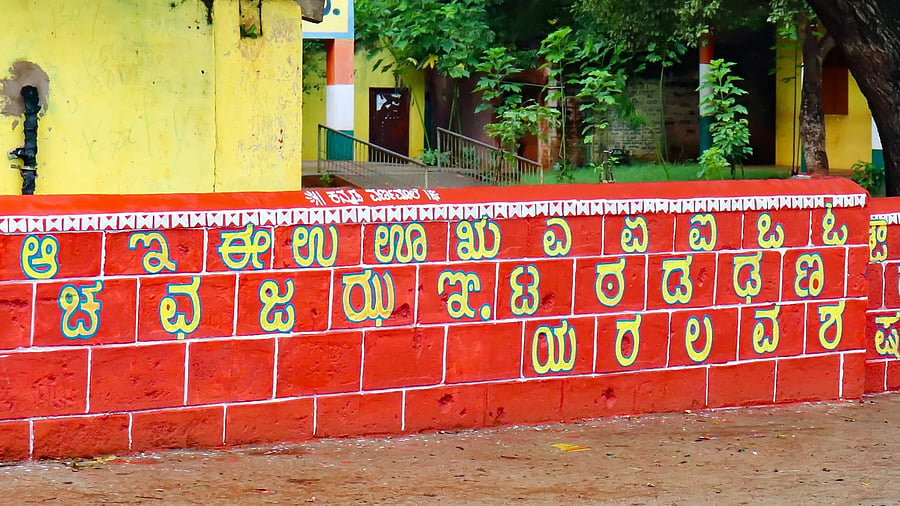
Credit: Special Arrangement
Kannada, the voice of Karnataka, thrives through its many dialects, each reflecting the state’s rich cultural, historical and social fabric. These dialects are more than mere modes of speech, they are living archives of identity, tradition and everyday life of their speakers. They also mirror regional variations, spanning North Karnataka, South Karnataka, Coastal Karnataka, Hyderabad Karnataka and Kodagu.
At its core, a dialect is a regional or social variation of a language, one that may sound different but remains understandable to other speakers of the same language. Kannada dialects share a common grammatical and lexical foundation, enabling speakers across regions to communicate with mutual understanding, though with varying degrees of ease. They reflect the unique cultural and historical context of its region, often through distinct phonological shifts that add layers of local flavour.
For instance, the North Karnataka dialect, spoken in areas like Dharwad, Belagavi and Vijayapura, carries a bold, rustic tone that mirrors the resilience of agrarian communities. Rooted in local traditions, it resonates with the simplicity of rural life, evoking folk traditions and literary legacies like the Vachana poetry. A hallmark of this dialect is the transformation of word-final ‘e’ into ‘i’, as in ‘mane’ becoming ‘mani’ (mane → mani, house) or ‘ele’ becoming ‘eli’ (ele → eli, leaf).
The Hyderabad Karnataka dialect, spoken in Kalaburagi, Raichur and Bidar, incorporates Telugu, Urdu and Marathi elements, reflecting the region’s multicultural borderlands. Here, pronouns like avaru become kavaru (they), and locatives shift as in illi → killi (here).
In contrast, the South Karnataka dialect, prevalent in Mysuru, Bengaluru and Mandya, is often perceived as softer and more “refined,” reflecting urban sophistication. Bengaluru’s version absorbs influences from Tamil and Telugu, reflecting the city’s cosmopolitan nature.
In regions like Hassan, Tumakuru, Kolar and Chitradurga, the velar ‘k’ shifts to the palatal ‘ch’ when preceding front vowels such as ‘i, ī, e, ē’, yielding forms like ‘kēḷu’ → ‘chēḷu’ (to hear) or ‘kēru’ → ‘chēru’ (street). Notably, this variety lacks the retroflex ‘ṣ’, replacing it with ‘s’ or ‘ś’.
Coastal Kannada, spoken in Mangaluru and Udupi, blends influences from Tulu, Konkani and Beary languages, creating a melodic dialect, tied to vibrant art forms like the Yakshagana. In Mangaluru’s standard forms such as ‘gañji, gaṇṭu, magu’ (rice gruel, knot, child), the coastal variant shifts to ‘geñje, geṇṭu, mogu’.
Kodagu’s dialect, spoken in the hilly region of Kodagu-Madikeri, is concise and shaped by its unique identity. In the Malenadu-influenced variety, the vowel ‘o’ often substitutes with ‘vo’, as in ‘ogaṭu’ → ‘vogaṭu’ (riddles).
These dialects are not mere linguistic variations but cultural mirrors, preserving regional stories through vivid phonetic markers.
Mutual intelligibility among Kannada dialects varies and societal perceptions often exacerbate these differences. While speakers from one region may generally understand another’s dialect, distinct pronunciation, vocabulary and intonation, such as the ‘e-to-i’ shift in Dharwad or the ‘k-to-ch’ in Hassan, can pose challenges.
Hierarchies in dialects
However, societal biases that label certain dialects as “pure” and others as “lesser” risk eroding this linguistic diversity. Such labels deepen these divides, with some dialects seen as “rough” or “mixed” and others as “pure”. Such biases create hierarchies that overlook the equal value of all dialects and dismiss their cultural and historical significance.
In education, these biases have profound consequences, eroding students’ confidence and cultural pride. Students speaking dialects perceived as “non-standard” may face correction or criticism, implying their home speech is inferior. This emphasis on a standardised Kannada, often based on urban varieties, can alienate young speakers and disconnect them from their linguistic heritage.
To address this, learning systems should adopt a translanguaging approach, integrating students’ home dialects with standard Kannada to create inclusive learning environments. For example, incorporating regional dialects in lessons about local traditions or literature can validate students’ linguistic identities, fostering pride and engagement.
Teacher training is essential to dismantle biases and recognise the cultural value of each dialect, ensuring students feel respected regardless of their speech.
In urban areas, the emphasis on English for professional opportunities often leads young speakers to abandon their dialects. Rural and borderland dialects, in particular, struggle to maintain relevance among youth drawn to a globalised culture. Cultural programmes such as theatre festivals can highlight the vibrancy of dialects, making them relevant to younger generations.
In recent years, digital platforms are offering powerful tools for preservation, with social media campaigns, short videos or apps showcasing regional speech patterns to rebrand dialects as modern and appealing.
Policy interventions, such as supporting dialect-specific media or documentation projects, can also ensure their long-term survival.
By embracing these strategies, Karnataka can protect its linguistic heritage, ensuring that every dialect contributes to the state’s cultural richness.
Ultimately, Kannada dialects are the cultural heartbeat of Karnataka. By valuing dialects in education through inclusive teaching, promoting cultural programmes and leveraging digital platforms, Karnataka can safeguard its linguistic mosaic.
Every dialect, from the rustic tones of the north to the melodic cadences of the coast, deserves celebration, ensuring Kannada remains a vibrant, inclusive language that unites the state in its diversity.
Credit: Special Arrangement
Credit: Special Arrangement
Credit: Special Arrangement
Credit: Special Arrangement
Credit: Special Arrangement